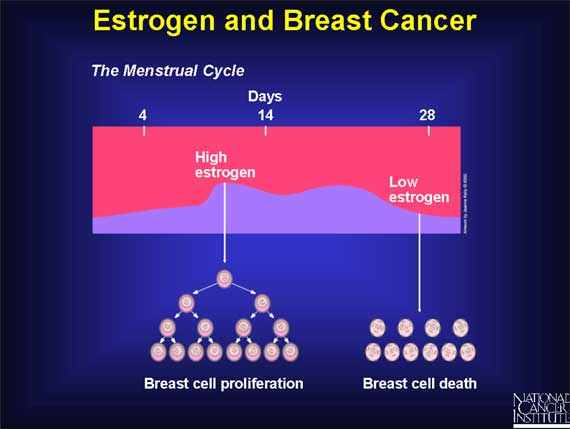|
During each menstrual cycle, estrogen normally triggers the proliferation of cells that form the inner lining of the milk glands in the breast.
If pregnancy does not occur, estrogen levels fall dramatically at the end of each monthly menstrual cycle. In the absence of high estrogen levels, those milk gland cells that have proliferated in any given month will deteriorate and die, followed by a similar cycle of cell proliferation and cell death the following month. For the average woman, this means hundreds of cycles of breast cell division and cell death repeated over a span of roughly 40 years, from puberty to menopause.
But how do these estrogen-induced cycles of breast cell proliferation increase the risk of developing cancer?

< Previous | Index | Next Slide > |